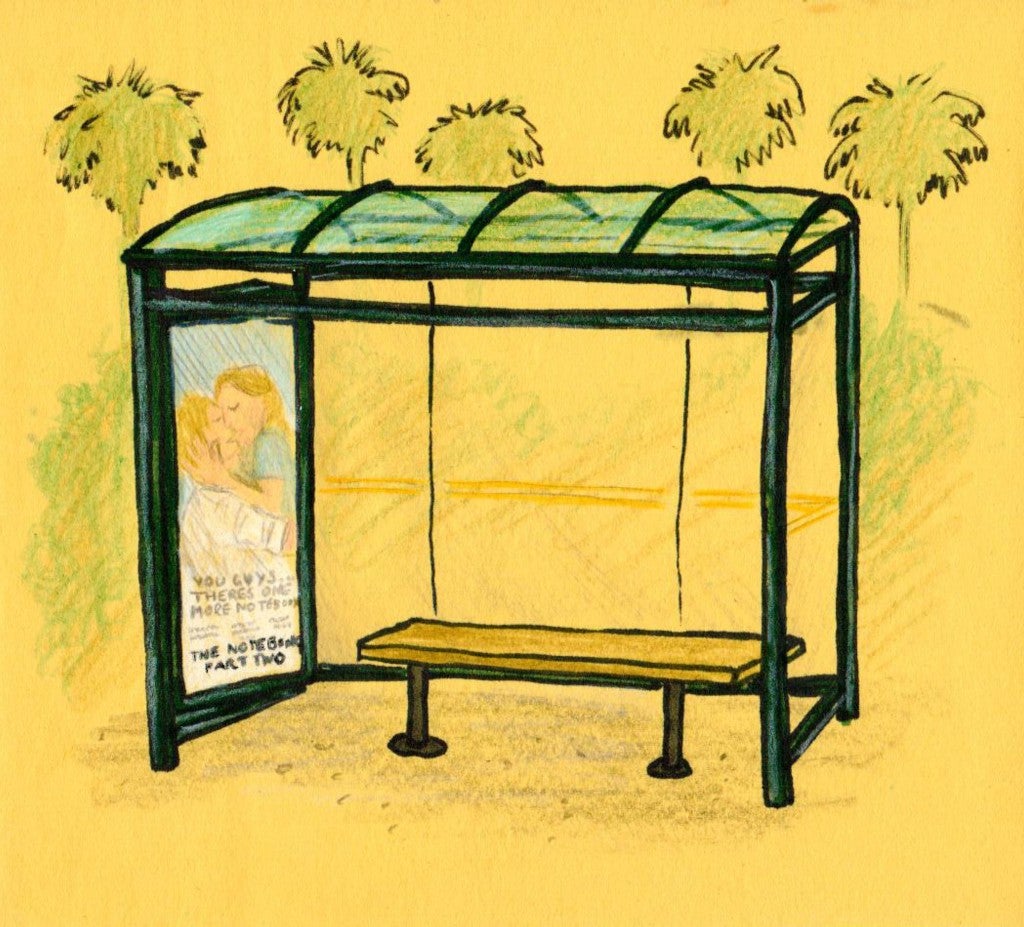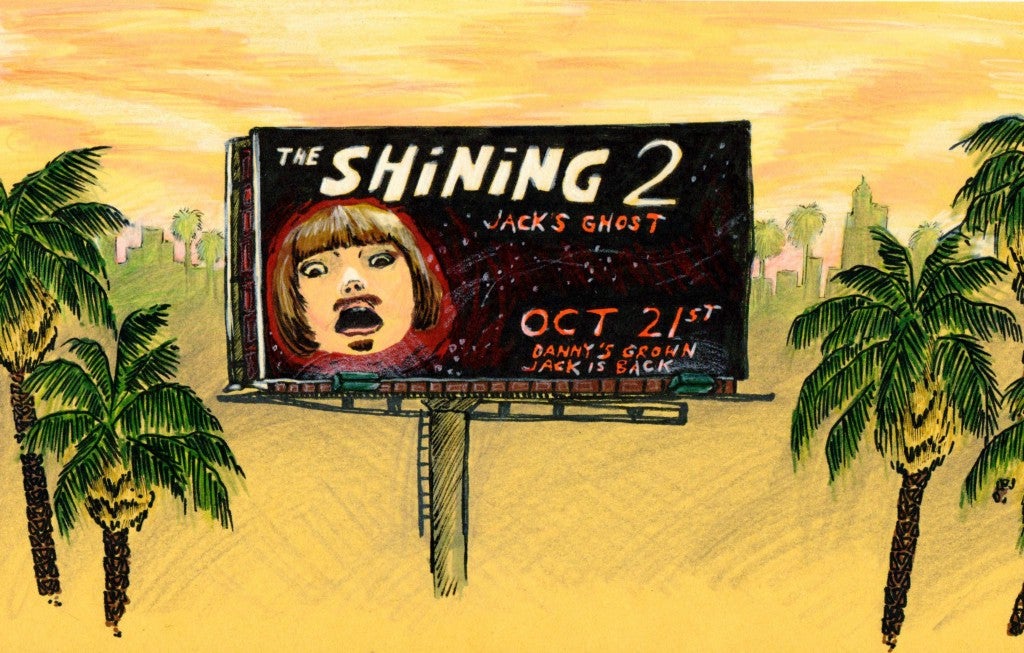The other day, a friend texted me in utter bewilderment: “Does the world really need My Big Fat Greek Wedding 2?” She’d been driving around Los Angeles and had no idea that a sequel to the sleeper 2002 indie hit was in the works until she encountered a billboard advertising its March 25 release. No matter how charming the original was, it was hard for her to imagine that, 14 years later, there was suddenly an insatiable demand for Nia Vardalos and John Corbett to go Big, Fat and Greek once again.
And yet, this sort of loooooong-after-the-fact sequel — or, better yet, let’s call it the way-too-late sequel (henceforth WTL) — has happened a lot recently. It’s not news that we live in an age in which many of the most successful movies are sequels, prequels, remakes or reboots. (Starting this weekend, six of the next seven weeks will open at least one such film.) But what is new is Hollywood’s attempt to extend franchises long after their last entry — often a decade or more.
This year alone will bring (or has already brought) sequels to popular-but-seriously-ancient movies such as Zoolander (Zoolander 2), Finding Nemo (Finding Dory) and Independence Day (Independence Day: Resurgence). Dubbing these sorts of films way-too-late sequels doesn’t mean that they can’t be good or box-office hits — just that they’re facing significant obstacles to making those scenarios more likely. Chief among those obstacles is an immutable fact: It’s been so long since the last film that audiences understandably stopped waiting on the follow-up. And, despite the original film’s popularity, it’s hard to know if enough people will actually care now that the sequel’s here.
In the past, Hollywood occasionally pulled classic titles out of mothballs and dusted them off, slapping new installments into theaters. 1990 saw the release of The Two Jakes and Texasville: two misbegotten and largely-forgotten sequels to, respectively, 1974’s Chinatown and 1971’s The Last Picture Show. That same year, the much-maligned Godfather Part III also hit theaters, a whopping 16 years after the Oscar-winning Godfather Part II, becoming one of 1990’s higher-grossing films.
Since then, studios had largely abandoned straight WTL sequels, instead reimagining their moribund properties by telling new origin stories (Batman Begins) or doing a “new take” on familiar material (this summer’s female-driven Ghostbusters). Especially in the wake of the commercially successful Star Wars prequel trilogy, Hollywood discovered the value in going back in time (or merely starting from scratch) rather than attempting to move their franchises’ biological clock further forward.
But 10 years ago, that started to change. Around Christmastime 2006, Sylvester Stallone released Rocky Balboa — the first Rocky film since 1990’s abysmal Rocky V. Made on a relatively low budget of $24 million, Rocky Balboa got surprisingly good reviews, grossing $156 million worldwide and kicking off a Stallone nostalgia wave that saw him putting out 2008’s Rambo, which was also the first in that series in 20 years. (Budgeted at $50 million, Rambo brought in only $113 million, failing to be as much of a profit-maker when you consider that roughly half of all theatrical grosses go back to the exhibitor.) Even though the central characters had aged significantly, audiences didn’t mind seeing a slower, more plastic-y Stallone back on the big screen.

Since 2006, the long-after-the-fact sequel has been happening more and more often — with very mixed results. In 2008, the wretched Indiana Jones and the Kingdom of the Crystal Skull badly tarnished the franchise’s legacy, trying to pick up the thread left by Last Crusade 19 years earlier. (Not that bad reviews mattered: The movie still made more than $785 million worldwide.) That same year, we had our first X-Files movie in a decade. (Audiences and critics yawned.) In 2010, Wall Street: Money Never Sleeps inexplicably arrived, and one of the Christmas holidays’ biggest attractions was Tron: Legacy — both sequels to movies made in the 1980s. In 2011, there was a Scream 4 — the first in that franchise in 11 years — and two years later, The Best Man Holiday (a surprise hit that will lead to a threequel) continued the action from 1999’s The Best Man. In 2014, Dumb and Dumber To brought back Jim Carrey and Jeff Daniels to revisit their hijinks from the 1994 original. (It was Carrey’s first hit in years.) And this year, we’ve already had the commercial and critical disaster Zoolander 2, which failed to delight audiences like 2001’s Zoolander had.
Whether it’s a first sequel (like Zoolander 2) or a continuation of a franchise (like Scream 4 or Kingdom of the Crystal Skull), these WTL sequels are different than your usual follow-up films in one important regard: Part of their story actually focuses on the fact that it’s been a long time since we last saw these people. Often, this means introducing new principal characters who are the progeny of the original characters — which happens in Tron: Legacy and Kingdom of the Crystal Skull. Or, you get stories that place the original characters in a position where they must face an element of their past — like in Zoolander 2 and Scream 4. Whatever the impetus, the driving force behind these movies (or at least the reason the creative team justifies their existence) is the poignant acknowledgement that time marches on and the characters we once loved are no longer the people they once were.
To be sure, there can be something undeniably moving in watching these WTL sequels. To see Harrison Ford in Kingdom of the Crystal Skull — our Indiana Jones, now without the agility and quick comic timing — is to be reminded that even our movie heroes get old. Part of the drama of Rocky Balboa (or Creed) is knowing that Rocky has lost the athletic prowess that once made him a world champion, and seeing how his character negotiates this new phase in his life. The passing of the torch in Tron: Legacy from father to son has an extra emotional oomph for those old enough to have seen 1982’s Tron during its initial run: We grew up with Jeff Bridges as the film’s hero, but now we recognize that a new generation must take his place. (In the indie world, director Richard Linklater has devoted an entire trilogy to this phenomenon of watching beloved actors age. Before Sunset and Before Midnight, the sequels to Before Sunrise, were each made seven years apart so that we could better appreciate the impact of time on his characters. And, of course, his 12-years-in-the-making Boyhood also used physical time as an element of its narrative.)

But the poignancy and nostalgia inherent in these WTL sequels can’t make up for the fact that, stripped of the relevancy of their era, they often feel like strange afterthoughts — like how a once-hip catchphrase now sounds hopelessly dated (WAZZZAAAAP!?). And when the sequel is especially uninspired, like Dumb and Dumber To or Zoolander 2, it feels akin to a once-popular band getting back together for a cynical comeback tour, glumly slogging through all the old hits. Not only is the experience painful to sit through — it’s actively embarrassing, making you rethink your earlier fond feelings for the people involved. (At least with traditional sequels, which come to the screen a couple years after the original, we can chalk up the lack of creativity on a rush to finish the film. Zoolander 2’s witless reunion of Ben Stiller’s Derek Zoolander and Owen Wilson’s Hansel McDonald took 15 years — that’s an average of one halfway decent joke per five years of incubation.)
Of course, not all of these sequels are disasters. Two of last year’s bigger smashes were Mad Max: Fury Road (the first Mad Max movie in 30 years) and Star Wars: The Force Awakens (which is the first Star Wars film since 2005’s Revenge of the Sith and the first non-prequel since 1983’s Return of the Jedi). Fury Road won six Oscars and was nominated for Best Picture — not to mention grossing $378 million worldwide — while The Force Awakens is America’s highest-grossing film ever, and currently sits at $2.1 billion worldwide. They’re the high-water mark for WTL sequels, achieving a rare feat of both impressing critics and audiences.
So, what’s their secret? There’s no silver bullet when it comes to this kind of follow-up film. But in the case of Fury Road, the lesson seems to be that you need a truly visionary new way of seeing the franchise. That doesn’t just mean the movie’s eye-popping visuals but also boldly rethinking the story, this time casting Mad Max (played by Tom Hardy, who replaced Mel Gibson from the original trilogy) as a supporting character and letting Charlize Theron’s Furiosa take the lead. As for The Force Awakens, the trick appears to be: If you’re Star Wars, people are probably going to like it regardless, especially if your movie doesn’t remind viewers of those god-awful prequels.
But few of these WTL sequels seem to have either the ambition or the sterling reputation to justify their big-screen arrival after such a long hiatus. As we prepare for My Big Fat Greek Wedding 2, Finding Dory and Independence Day: Resurgence, there’s a nagging feeling that — to answer my friend’s text — nobody really needs any of these movies. Some of them may be good, some of them may make a ton of money — but we’ve gone long enough without a sequel to these films that we’ve lost any craving for one. Life’s too short to risk it on movies that might not be worth the wait.

